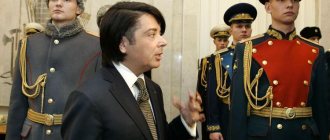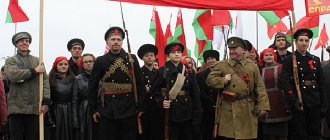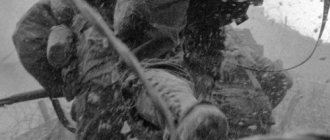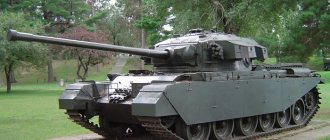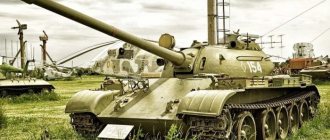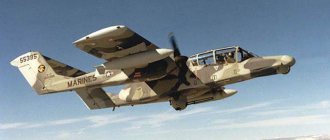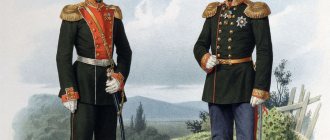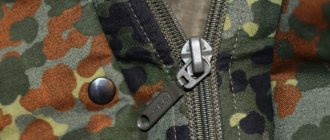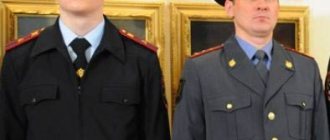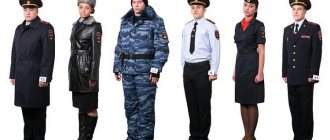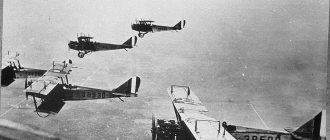After the surrender of Germany at the end of the First World War, the country fell into a deep crisis. The result was the spontaneous formation of nationalist organizations that wanted to cleanse the state of “traitors” who welcomed communist views. It was on this basis that the NSDAP party arose, whose ideological leader was Adolf Hitler. Later, on his orders, paramilitary SS detachments were formed, whose members initially played the role of personal bodyguards of those in power.
Who are the SS men? Photos, insignia, uniforms, and the purpose of these structures will be discussed further in the material.
SS soldiers: the beginning of the story
It all started in March 1923, when A. Hitler’s personal guard and driver, a watchmaker by profession, Emil Maurice, together with a stationery dealer and part-time political figure in Nazi Germany, Joseph Berchtold, created a headquarters guard in Munich. The main purpose of the newly formed combat formation was to protect the NSDAP Fuhrer Adolf Hitler from possible threats and provocations from other parties and other political formations.
After humble beginnings as a defense unit for the NSDAP leadership, the combat unit grew into the Waffen-SS, an armed defense squadron. The officers and men of the Waffen-SS constituted a formidable fighting force. The total number was more than 950 thousand people, and a total of 38 combat units were formed.
Beer Hall Putsch by A. Hitler and E. Ludendorff
“Bürgerbräukeller” is a beer hall in Munich at Rosenheimerstrasse 15. The area of the drinking establishment could accommodate up to 1830 people. Since the Weimar Republic, thanks to its capacity, the Bürgerbräukeller has become the most popular venue for various events, including political ones.
So, on the night of November 8-9, 1923, an uprising took place in the hall of a drinking establishment, the purpose of which was to overthrow the current government of Germany. The first to speak was A. Hitler's ally in political convictions, Erich Friedrich Wilhelm Ludendorff, outlining the general goals and objectives of this gathering. The main organizer and ideological inspirer of the event was Adolf Hitler, the leader of the NSDAP, a young Nazi party. In his indictment, he called for the ruthless destruction of all enemies of his National Socialist Party.
The SS soldiers, led at that time by the treasurer and close friend of the Fuhrer J. Berchtold, undertook to ensure the safety of the Beer Hall Putsch - this is how this political event went down in history. However, the German authorities reacted in time to this gathering of Nazis and took all measures to eliminate them. Adolf Hitler was convicted and imprisoned, and the NSDAP party was banned in Germany. Naturally, the need for the protective functions of the newly created paramilitary guard also disappeared. The SS soldiers (photo presented in the article), as a combat formation of the “Shock Detachment”, were disbanded.
The restless Fuhrer
Released from prison in April 1925, Adolf Hitler orders his fellow party member and bodyguard Yu. Schreck to form a personal guard. Preference was given to former fighters of the Shock Squad. Having gathered eight people, Yu. Shrek creates a defense team. By the end of 1925, the total strength of the combat formation was about a thousand people. From now on they were given the name “SS soldiers of the National Socialist German Workers' Party.”
Not everyone could join the SS NSDAP organization. Strict conditions were imposed on candidates for this “honorary” position:
- age from 25 to 35 years;
- living in the area for at least 5 years;
- the presence of two guarantors from among the party members;
- good health;
- discipline;
- sanity.
In addition, in order to become a party member and, accordingly, an SS soldier, the candidate had to confirm his belonging to the superior Aryan race. These were the official rules of the SS (Schutzstaffel).
Formation of SS military units
As of 1935, the number of soldiers in Hitler's personal guard regiment increased from 120 to 2,600 people. Soon the Fuhrer announced the introduction of compulsory military service in the country. The result was the transformation of the soldiers who were engaged in protecting the top of the government into special forces - SS-Verfugungstruppe. In peacetime, such units were required to engage in combat training under the watchful control of the Reisführer, and during the war they were completely at his disposal.
At first, ground forces soldiers enrolled in SS units on a voluntary basis. In order to train officers, special schools were organized in Braunschweig and Bad Tölz. Military men devoted to Nazi beliefs were raised here. It is noteworthy that everyone who wanted to join the ranks of the SS had to meet certain parameters, in particular, have a height of at least 175 cm.
Education and training
SS soldiers had to undergo appropriate combat training, which was carried out in several stages and lasted for three months. The main objectives of the intensive training of recruits were:
- excellent physical fitness;
- knowledge of small arms and impeccable possession of them;
- political indoctrination.
The training in the art of war was so intense that only one out of three people could complete the entire distance. After the basic training course, recruits were sent to specialized schools, where they received additional education appropriate to the chosen branch of the military.
Further training in military wisdom in the army was based not only on the specialization of the branch of service, but also on mutual trust and respect between candidates for officer or soldier. This is how the Wehrmacht soldiers differed from the SS soldiers, where strict discipline and a strict policy of separation between officers and privates were at the forefront.
A uniform
The SS uniform consisted of fairly elegant black trousers and a jacket. Both items were made from natural wool with the addition of viscose. This made it possible to increase the service life of the uniform. High-waisted trousers were paired with suspenders. The SS men wore a single-breasted jacket, which contained four large pockets, which were intended for personal belongings and storage of ammunition.
Unit members wore gray woolen shirts. The latter were cut quite loosely, which made it possible to ensure comfort of movement and keep warm.
SS soldiers wore a black cotton cap. Along the top and bottom of the headdress there was piping, the shade of which corresponded to the branch of the military. Generals wore caps of a similar design, but made of black velvet.
New chief of the combat unit
Adolf Hitler attached special importance to the newly created own troops, which were distinguished by their impeccable devotion and loyalty to their Fuhrer. The main dream of the leader of Nazi Germany was to create an elite formation capable of performing any tasks that the National Socialist Party set for them. This required a leader who could handle this task. So, in January 1929, on the recommendation of A. Hitler, Heinrich Luitpold Himmler, one of A. Hitler’s loyal assistants in the Third Reich, became Reichsführer SS. The personal personnel number of the new SS chief is 168.
The new boss began his work as the head of an elite division by tightening personnel policies. Having developed new requirements for personnel, G. Himmler cleared the ranks of the combat formation by half. The Reichsführer SS personally spent hours studying photographs of SS members and candidates, finding flaws in their “racial purity.” However, soon the number of SS soldiers and officers increased noticeably, increasing almost 10 times. The SS chief achieved such success in two years.
Thanks to this, the prestige of the SS troops increased significantly. It is G. Himmler who is credited with the authorship of the famous gesture, familiar to everyone from films about the Great Patriotic War - “Heil Hitler”, with the raising of the straightened right arm at an angle of 45º. In addition, thanks to the Reichsführer, the uniform of Wehrmacht soldiers (including the SS) was modernized, which lasted until the fall of Nazi Germany in May 1945.
Fuhrer's order
The authority of the Schutzstaffel (SS) increased significantly thanks to the personal order of the Fuhrer. The published order stated that no one had the right to give orders to SS soldiers and officers except their immediate superiors. In addition, it was recommended that all SA units, the assault troops known as the “Brown Shirts,” assist in every possible way in staffing the SS Army, supplying the latter with their best soldiers.
Special SS parts
In the second half of 1939, the following SS units were organized:
- Motorized Infantry Regiment - several motorized infantry, reconnaissance, artillery and anti-tank battalions under the command of General Sepp Dietrich, Hitler's closest ally.
- The Deutschland Regiment is formed from 4 reconnaissance and artillery battalions. Members of the paramilitary structure took part in the occupation activities aimed at capturing the Sudetenland in 1938.
- Regiment "Germania" - according to the structure, had a structure similar to a motorized infantry regiment. The soldiers among his number were involved in the occupation of Austria.
- “Death's Head” - five SS regiments whose soldiers did not have significant combat experience. The latter played the role of internal police, were responsible for the security of representatives of the country's top leadership, and were later employed as concentration camp guards.
Uniforms of the SS troops
From now on, the uniform of an SS soldier was noticeably different from the clothing of the assault troops (SA), the security service (SD) and other combined arms units of the Third Reich. A distinctive feature of the SS military uniform was:
- black jacket and black trousers;
- White shirt;
- black cap and black tie.
In addition, on the left sleeve of the jacket and/or shirt there was now a digital abbreviation indicating belonging to one or another standard of the SS troops. With the outbreak of hostilities in Europe in 1939, the uniform of SS soldiers began to change. Strict implementation of G. Himmler’s order on a single black and white uniform color, which distinguished the soldiers of A. Hitler’s personal army from the combined arms color of other Nazi formations, was somewhat relaxed.
The party factory for sewing military uniforms, due to its enormous workload, was not able to provide uniforms to all SS units. The military personnel were asked to alter the Schutzstaffel insignia from the Wehrmacht combined arms uniform.
First participation in hostilities
Despite the fact that the SS men are special forces regiments, in September 1939 the need arose for their use during military operations. The motorized infantry regiment and the Germania unit were sent to Poland. The latter became part of the 10th and 14th armies. The Deutschland regiment was involved in defensive actions on the Western Front.
The occupation campaign in Poland proved that the SS men are brave, skillful and well-trained warriors. At the same time, some soldiers of this type of troops behaved somewhat self-confidently and even recklessly, as evidenced by the reports of the command. The reason was the reluctance of SS officers to obey ordinary field commanders. For this reason, Himmler ensured that the SS regiments fought autonomously, independently of the general troops.
Military ranks of the SS troops
As in any military unit, the SS Army had its own hierarchy in military ranks. Below is a comparative table of the equivalent military ranks of military personnel of the Soviet Army, Wehrmacht and SS troops.
| Red Army | Ground forces of the Third Reich | SS troops |
| Red Army soldier | Private, rifleman | Mann SS |
| Corporal | Chief Grenadier | Rottenführer SS |
| Lance Sergeant | Non-commissioned officer | SS Unterscharführer |
| Sergeant | Non-commissioned sergeant major | Scharführer SS |
| Staff Sergeant | Sergeant Major | SS Oberscharführer |
| Sergeant Major | Chief Sergeant Major | SS Hauptscharführer |
| Ensign | — | — |
| Lieutenant | Lieutenant | SS Untersturmführer |
| Senior Lieutenant | Chief Lieutenant | SS Obersturmführer |
| Captain | Captain/Hauptmann | SS Hauptsturmführer |
| Major | Major | SS Sturmbannführer |
| Lieutenant colonel | Oberst-lieutenant | SS Obersturmbannführer |
| Colonel | Oberst | Standartenführer SS |
| Major General | Major General | SS Brigadeführer |
| Lieutenant General | Lieutenant General | SS Gruppenführer |
| Colonel General | General of the troops | SS Oberstgruppenführer |
| Army General | Field Marshal General | SS Oberstgruppenführer |
The highest military rank in Adolf Hitler's elite army was Reichsführer SS, which until May 23, 1945, was held by Heinrich Himmler, equivalent to Marshal of the Soviet Union in the Red Army.
Awards and insignia in the SS
Soldiers and officers of the elite unit of the SS troops could be awarded orders, medals and other insignia, just like military personnel of other military formations of the army of Nazi Germany. There were only a small number of distinctive awards that were developed specifically for the “favorites” of the Fuhrer. These included medals for 4- and 8-year service in Adolf Hitler's elite unit, as well as a special cross with a swastika, which was awarded to SS men for 12 and 25 years of dedicated service to their Fuhrer.
Foreigners serving in the Wehrmacht and SS troops (19 photos)
Author: zaCCCPanec
29 September 2022 14:14
Tags: Collaboration second world war pages of history
8256
19
Collaboration during the Second World War. As we understand this well today, people who became collaborators during the Second World War were: 1) whose spirit was weak and whose moral principles were very low; and 2) who had their own views on the social system in their country.
0
See all photos in the gallery
Soldiers of the 13th SS Mountain Division "Handschar" in characteristic red fezzes.
Both are, in general, understandable and explainable. Such people exist, have been and will be. The only truly important question is: why were they so often so cruel to their own? That is, Hitler managed not only to attract people with a low level of morality from almost all over the world, but also to completely deprive them of their humanity and push them to commit atrocities against people of their own nationality, and even their immediate fellow citizens. And the number of such “guards” of the Fuhrer was by no means small. The count went into many thousands. First, let's look at the European collaborators.
×
0
And this is their emblem.
0
For example, in January 1944, their number in the SS troops was 37.3 thousand people, and among them were Norwegians (3.8 thousand people), Danes (5 thousand people), and Flemings (5 thousand people), as well as the Dutch (18.4 thousand people), as well as the Walloons (1.8 thousand people), and, of course, the French (2.4 thousand people), of whom The Germans themselves classified them as “Germans” already during the war.
0
Let us recall that “German volunteers” from among the “Volksdeutsche” who lived in Norway, Denmark, Belgium, and Holland, as well as ethnic Germans who lived outside Germany, fully staffed as many as 12 “volunteer” SS divisions: 5th ("Viking"), 7th ("Prince Eugene"), 22nd ("Nordland"), 18th ("Horst Wessel"), 22nd ("Maria Theresa"), 23rd ( "Nederland"), 27th ("Langemarck"), 28th ("Wallonia"), 31st ("Bohemia and Moravia"), 32nd ("January 30"), 34th ("Landstorm") Nederland"), 37th ("Lutzow").
0
The Fuhrer's soldiers fought under such banners. Well, who can read Arabic?
The SS command also formed such foreign divisions as the 23rd “Kama” and the 13th mountain division “Handschar” (from Croats, as well as Bosnians and Muslim residents of Herzegovina), then the 21st division “Skanderberg” was created from Albanians. , from the Italians the 29th, from the Hungarians the 25th “Hunyadi”, and the 26th “Tembes”, from the French the 33rd division “Charlemagne” (that is, “Charlemagne”) consisted, from the Lithuanians, Latvians (15- I, 19th), Estonians (20th), citizens of the USSR and simply former Russian citizens (29th “ROA”, 30th), Belarusians, Ukrainians (14th “Galicia”).
0
To distinguish the "volunteer" SS divisions manned by Norwegians, Danes, Dutch, Flemings and Volksdeutsche, they were called "SS divisions". During the war there were at least 15 of them. The exact number of such “volunteer divisions” and “SS divisions” is quite difficult to establish due to the existence of many smaller units - battalions, regiments, brigades, legions, also created under the auspices of the SS. Some of them were brought to the size of divisions, some did not have time to reach the required number, and some the SS command wanted to form, but did not have time, and they remained only on paper.
0
It is interesting that representatives of foreign states that were not occupied by Germany also served in the SS. For example, 101 Swedes served Hitler, there were more Swiss - 584 people, there were also Finns, Romanians, Bulgarians, Spaniards, who had their own national legions. And these were real volunteers - either fanatics or real adventurers, who often crossed the borders of their countries illegally just to take part in the “struggle against Bolshevism.” True, the number of such people was very small, but nevertheless there were some.
0
After lunch prayer. And the obligatory request is that your national god help Adolf Hitler.
Spanish volunteers also fought in the SS troops. For example, it was the 250th Infantry Division, which was part of the German Army Group North, and was in Russia for quite a long time, but then returned to Spain in October - November 1943. But there were soldiers and officers who remained to fight in Russia. From these ideological volunteers, the “Spanish Legion” (or “Blue Legion”, as it was called unofficially) was formed, which fought on the side of Nazi Germany until March 1944, when, by decision of the Spanish government, it was also recalled to its homeland.
0
There were blacks in the German army! "Corps F", or "Helmut Felmy", after the name of its commander. Operated near Rostov in 1942. Of his six thousand soldiers, three thousand are Arabs and blacks of the Maghreb.
Moreover, General Franco gave the order to close the Spanish-French border to such volunteers who might again wish to go to Germany. And yet, there were approximately 150 people who crossed the border illegally. Naturally, in France the German authorities received them very well and sent them to a training camp in Stablatt, near Konigsberg. And from there they again ended up... in a unit of the SS troops. As a result of all these “border crossings”, by April 1945, under the command of the former captain of the “Blue Division” Miguel Esquerra, now an SS Standartenführer (Colonel of the SS troops), there were three companies from the Spaniards and also a number of soldiers from the French and Belgian formations of the “troops”. SS." And the devotion of these volunteers was fully rewarded by Hitler himself, since the Esquerra Compound was tasked with guarding the Reich Chancellery. And it was precisely this army that fought in the last battles of May 1945 for the government quarters of Berlin. Fate was merciful to the brave Spaniard. He was captured, but managed to escape and reach Spain. No one pursued him there, so he even managed to write and publish his memoirs.
0
Member of the German African Nazi Party Ashkari along with members of the Austrian Nazi Party. This is such touching fascist “internationalism” in action.
That is, there really were volunteers who fought in the SS because of their own “consciousness.” However, there were in no way enough of them and they had to forcefully recruit “volunteers” into the SS troops. As a result, they began to differ little from the “colonial troops,” and those, as everyone knows, were extremely unreliable weapons at all times.
0
A group of Cossacks from the German troops on the southern sector of the Eastern Front. Dressed in Soviet overcoats and hats.
For precisely this reason, many SS units were either disbanded or created again, they were shuffled like cards and transferred from one section of the front to another, sections of the front, which is why it is so difficult to determine their exact number. Some units did not participate in hostilities at all, but were used as punitive and police units to deal with local residents of the occupied territories and fight partisans. The Germans had no illusions. And they understood that as soon as they were “their traitors,” they would be betrayed a second time, as happened, for example, with the “Russian SS squad.”
0
By the way, there were two “squads”: “1st and 2nd Russian SS squads.” Walter Schellenberg, head of the SS intelligence service (VI directorate of the RSHA), wrote in his memoirs that the “Druzhina” was formed from those Soviet prisoners of war who, as part of Operation Zeppelin, were being prepared for delivery to the Soviet rear. There they were supposed to engage in espionage and sabotage, but since their dispatch was often delayed, they were united into a combat unit, which was called “Druzhina”. Its commander was a former Soviet officer, Lieutenant Colonel Rodionov (who had the nickname Gill). At first there was only one “squad”, then a second one appeared, and in March 1943, they were united into the “1st Russian National SS Regiment”. Then the “1st Russian National SS Brigade” was created from it, and Rodionov first became the commander of this regiment, and then the commander of the brigade. Schellenberg wrote that he warned his superiors not to use these Russian formations in punitive actions against the partisans. That in this case it is possible for the brigade to go over to the “Reds” side. And he, one might say, looked into the water!
0
In August 1943, the brigade was again involved in combing the village in search of partisans. Noticing a column of Soviet prisoners of war, who were guarded by SS soldiers, the brigade soldiers attacked the convoy, freed the prisoners and went with them to the partisans. It turned out that Rodionov had contacted the partisan detachment in advance. Zheleznyak, and through him the leadership of the partisan movement in Moscow. They believed him, and the whole operation went “without a hitch,” and he even made provision for the arrest of the most inveterate traitors among the brigade commanders, who could resist when going over to the partisans. It is clear what consequences this “betrayal” had, but... the policy towards collaborators has not changed. There are no people - you will use whoever you have to!
0
However, the most surprising and, in general, phenomenon that is very difficult to explain was the use by the Nazis of various Muslim, Caucasian and Turkic formations. And this after Himmler himself called them “savage peoples.” And moreover, their formation within the “SS troops” completely, 100% contradicted all Nazi racial doctrines, and the very purpose of the SS organization, which was originally conceived as a “union of specially selected Nordic Germans.” And here? Flat faces, narrow eyes... Well, such Nordic signs that there’s simply nowhere else to go!
0
It is not clear why, but Hitler was particularly distrustful of the volunteer units of collaborators recruited from the peoples of the USSR, and only saw Muslims as those on whom he could rely. For example, in December 1942, at one of the meetings, he told his generals: “I don’t know how these Georgians will behave. They do not belong to the Turkic peoples; I consider only Muslims reliable. I consider everyone else unreliable. At the moment, I consider the formation of these purely Caucasian battalions to be very risky, while I do not see any danger in the creation of purely Muslim formations. Despite all the statements of Rosenberg and the military, I also do not trust the Armenians.” That's how! And once again it shows how dangerous it is to trust the opinion of a “brilliant leader,” especially... one who does not have a decent education, because most often it will be incorrect. But - the Fuhrer said and “the machine started spinning”: the formation of military units from Soviet prisoners of war from the “Turkestan and Caucasian nationalities” began, which included Uzbeks, Kazakhs, Tatars, Azerbaijanis, etc. Already at the end of 1943, the “1st East -Muslim SS regiment." In November 1944, it was turned into the “Eastern Turkic SS Forces Unit”, which was placed under the command of the SS Standartenführer... Harun al-Rashid. For some time it was listed as part of the 13th (Muslim) SS Mountain Division "Handschar", but later became a separate formation.
0
Soldiers from the 51st Division of the British Army next to prisoners of war from national units. The legionnaire on the left has a clearly visible emblem with the inscription TURKISTAN (another version of it is also known, where a bow and arrow was depicted).
In May 1944, in the Minsk region, the regiment took part in hostilities against the Red Army and... then what was supposed to happen happened. A large group of Kazakhs went over to the partisans. After this, the regiment, or rather what was left of it, was transferred to Northern Slovakia. But even there, in December 1944, 400 Uzbek soldiers and officers again went over to the partisans. The rebels were commanded by SS Obersturm-Führer Alimov, who at one time commanded this regiment.
0
A sentry from the Free Arabia Legion.
The British and American soldiers who landed in Normandy in June 1944 constantly noted that many of the “Germans” who surrendered to them turned out to be citizens of the Soviet Union. According to their estimates, these were about 10% of all captured soldiers of the German army. And many fled to the French partisans if such an opportunity presented itself.
0
Very interesting photo. Chinese Jiang Weiguo in the Wehrmacht fanen-junker (officer candidate) uniform.
In one of the comments to the first part of this material, the question was asked: did the blacks fight for the Germans? Yes, we fought. Because the command of the German armed forces, and especially the leadership of the SS, did not consider it anything special to use “cannon fodder” with any skin color. And if Reichsführer SS Himmler agreed to the creation of “national” units from Russians and Muslims, then there was a place for the British, Americans, and even Hindus and Arabs. And why are they worse? Moreover, there was another category of scum, whom they also did not disdain. These are actually German criminals, who, one might say, were ordered by God himself to “atone for their guilt before the Reich” by fighting the partisans as part of the “valiant SS troops.” And such a unit, naturally, was formed already in February 1942. It was a special SS Dirlenwanger battalion, which in 1945 became the 36th SS Dirlenwanger Division. Moreover, not only German criminals served in it, but also traitors from among the Ukrainian nationalists. Apparently, this audience turned out to be the closest in spirit to them, otherwise it’s difficult to explain.
The admission of criminals into the ranks of the SS took place right in the concentration camps, and the selection of candidates itself was reduced to a simple formality. In the camps, such “SS men” performed the duties of capos, guards, block seniors, etc. In Auschwitz, these prisoners had been, for example, since 1940 and “worked” together with the SS “Totenkopf” guards. Whatever crime they committed, they had nothing to fear from the gas chamber, they ate separately from other prisoners, had special rations and even... their own apartments in the camp, often well furnished, and even sold the things of the exterminated prisoners. That is, the fascists used almost any “human material”, as long as it had suitable “morality” and spiritual values corresponding to its “ideals”.
0
And this is who he became - that is, the experience of the German service benefited him. Jiang Weiguo is a general in the armed forces and the Minister of National Defense of Communist China. 1965-1969
And lastly, all this was by no means a secret to anyone in the highest echelons of power in the Reich. An open secret, so to speak, and nothing more. Thus, far from the last person in the SS hierarchy, and second after Himmler, SS Obergruppenführer Reinhard Heydrich, in June 1942 directly called the SS a “garbage can.” That is, he, at least, was aware that the actions of the SS, and himself, were simply criminal. And it is hardly an exaggeration to say that being a fascist or a Nazi (here the precision of formulation does not play a special role!) simply means a state of mind, otherwise no one would buy such stupidity. And they were under Hitler in Germany, they were in England, the USA, France, Norway among Arabs and Indians, among the Chinese, Japanese, among citizens of the USSR and white emigrants from Tsarist Russia. They exist today in the West, and in the former republics of the USSR, and even in modern Russia...
Source:
Related links:
- The Baltimore Sun (USA): Abuse of Russia on D-Day anniversary raises concerns
- Silent Innocent Victims: Monument to the 82 Children Murdered by the Nazis in Lidice
- The British recreated the events of World War II
- Minted: the USA issued a coin with the allies in World War II without the USSR
- How Maori soldiers danced in front of the British king
Tags: Collaboration second world war pages of history
Did you like the post? Support Chips, click:
106 12 94
Liked
94 4
44
Partner news
Faithful sons of their Fuhrer
Recollection of an SS soldier: “Our guiding principles were duty, loyalty and honor. Defense of the Fatherland and a sense of camaraderie are the main qualities that we cultivated in ourselves. We were forced to kill everyone who was in front of the barrel of our weapons. A feeling of pity should not stop a soldier of great Germany, either in front of a woman begging for mercy, or in front of children's eyes. We were taught the motto: “Accept death and bear death.” Death should become commonplace. Each soldier understood that by sacrificing himself, he thereby helped great Germany in the fight against the common enemy, communism. We considered ourselves warriors for the future of the world, Hitler’s elite.”
These words belong to one of the soldiers of the former Third Reich, private SS infantry unit Gustav Franke, who miraculously survived the Battle of Stalingrad and was captured by the Russians. Were these words of repentance or the simple youthful bravado of a twenty-year-old Nazi? Today it is difficult to judge this.
Insignia
Unlike other Nazi paramilitary units, SS soldiers did not wear the Wehrmacht state emblem on their uniforms. Instead, a special SS sign was used, where the eagle's wings were more straightly spread to the sides. The very image of a bird of prey was placed above a laurel wreath with a swastika in the center. The emblem was sewn onto the sleeve of a military uniform using silk or aluminum thread. There was a similar sign on the cap.
The symbol of the “Zig” rune in the form of a schematic image of two lightning bolts was placed in the right buttonhole of the SS troops’ uniform. These symbols could be embroidered on the uniform or in the form of a metal badge.
Soldiers who belonged to the special "Totenkopf" division wore a badge in the form of a skull and crossbones instead of the traditional SS "Sieg" runes.
Trial of collaborators of Nazi Germany
At the Nuremberg trials, officers and soldiers of the Wehrmacht and SS were convicted as members of a criminal organization, so veterans of the mentioned military formations were deprived of many of the rights enjoyed by their other compatriots who had gone through combat operations.
However, German SS soldiers, whose age at the end of World War II did not exceed 18 years, were exempt from conviction and completely acquitted due to the minority of the conscript.
It is worth noting that today the training system for Waffen-SS soldiers has been adopted by the modern army of some European countries and the United States of America.
The fate of the SS men after the war
According to historical information, a total of about 180,000 SS soldiers were killed during hostilities during World War II. About 400,000 members of the organization were injured. Another 40,000 soldiers remain missing.
What was the fate of the SS men? During the Nuremberg trials, all military personnel belonging to the SS units were accused of crimes against humanity. Most of them admitted their involvement in the Holocaust. The only exceptions were persons who were forced into the ranks of the organization by government agencies and actually had no choice. The charges were dropped against the SS men, who proved that they were not involved in war crimes.
